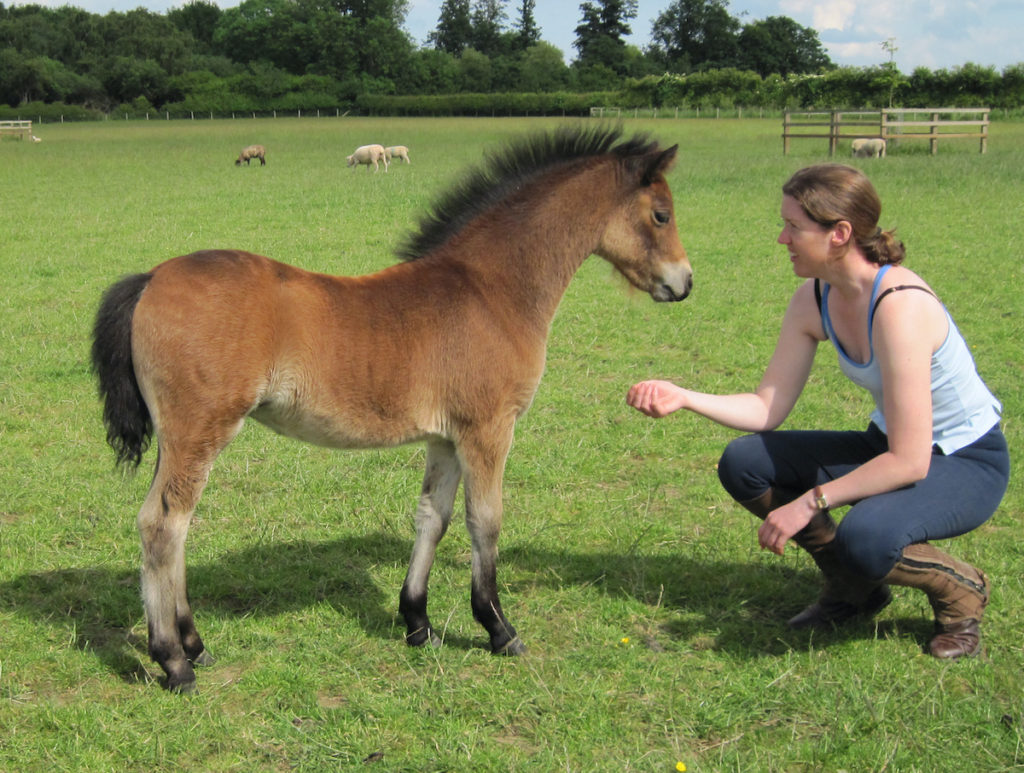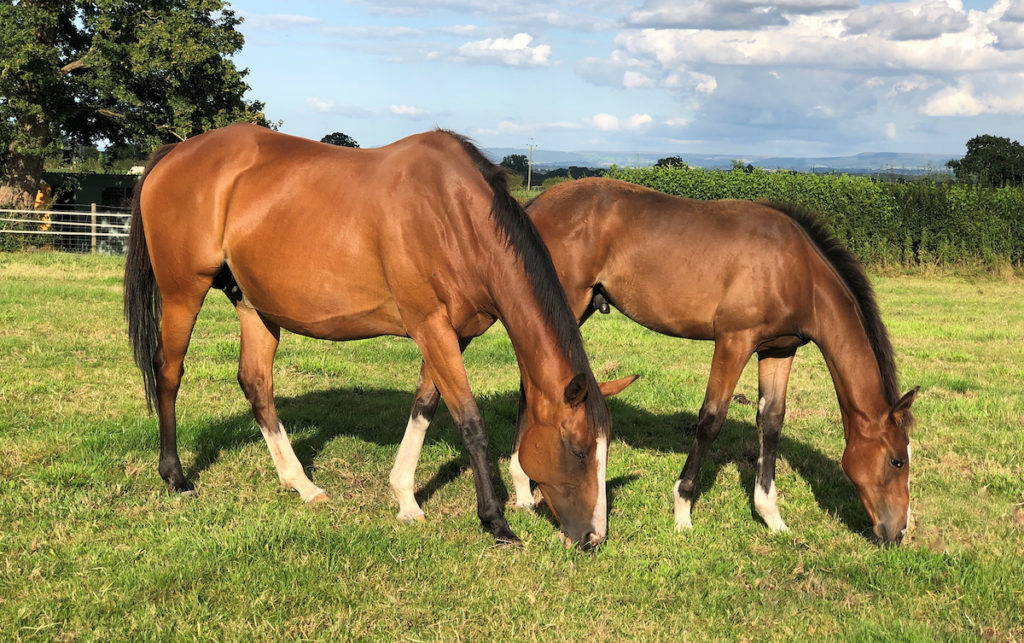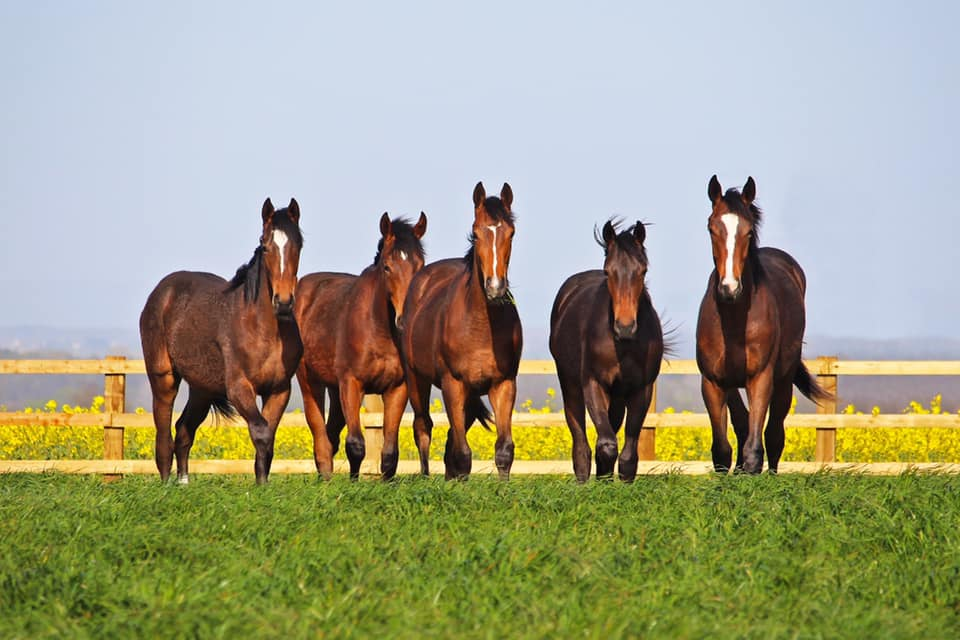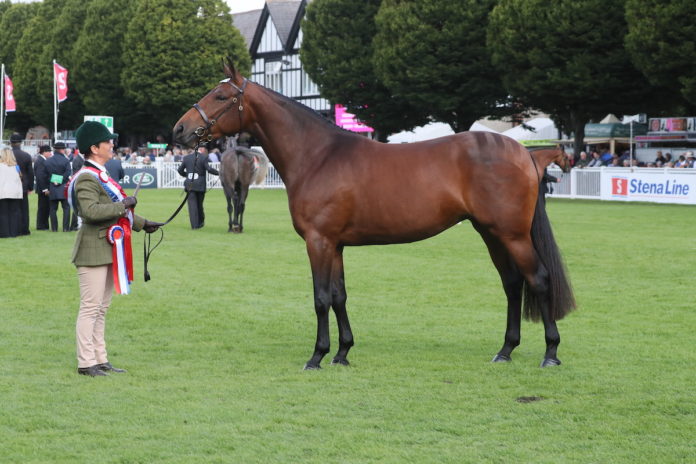We only get one crack at feeding young horses to give them the best start in life.
When feeding youngstock, the three main aims are to allow them to achieve their full genetic potential, to minimise the risk of illness and to achieve both these objectives in a cost-effective way, writes Nicola Tyler BSc (Hons), R.Nutr, nutrition director, TopSpec Equine
Whether a young horse is home-bred or purchased, every owner wants to give him the best possible start in life and this is usually achieved with grazing or hay/haylage supplemented with an appropriate feed balancer plus alfalfa/grass chops and possibly additional blends/straights or compound feed.
There is an increased awareness of the fact that large feeds of cereal-based compound feeds do not suit the horse’s digestive system, and this has led to a more intelligent way of feeding.
Most youngsters are now fed as naturally as possible, by maximising forage intake and minimising concentrate intake. This can be done by feeding better quality forage and by using less concentrates and/or more nutrient-dense concentrates.
The most nutrient-dense concentrates available are top specification feed balancers that include a lot of nutrients in a small amount of feed, such as TopSpec Stud Feed Balancer. By maximising the forage to concentrate ratio, the risk of digestive upsets like colic are significantly reduced and behaviour is often more relaxed with a reduced likelihood of stereotypical behaviour, such as crib-biting, developing.
Aim to feed youngstock with TopSpec Stud Feed Balancer in order to maximise musculo-skeletal development without over feeding energy (calories). Balanced feeding, with the emphasis on the protein quality, mineral, vitamin and trace-element composition of the ration, is vital.
If youngstock on a 25-30% protein balancer are in danger of becoming overtopped, TopSpec Stud Lite Feed Balancer (15% protein) is an ideal source of micronutrients.
Foals
Foals grow very rapidly, doubling their birth weight by one month of age, and trebling it by three months.
By six months old, they will have reached half their mature weight and at one year old most youngsters will have reached about 70% of their adult weight and 90% of their adult height.

Although foal growth is fast, it is important to keep that growth steady and even, avoiding growth spurts, because they are one of the factors that have been associated with developmental orthopaedic disease, commonly known as DOD (a loose term covering many conditions e.g. physitis, contracted tendons and osteochondritis dissecans).
Various forms of DOD can occur at any stage in a youngster’s life but they arise most commonly during the first few months and also a while after weaning (usually at eight to ten months of age). Many factors are thought to contribute to the incidence of DOD, including genetics, but it is wise to ensure that you are not adding to the risk by feeding incorrectly.
It was once thought that simply providing too much feed could contribute to DOD; but recent research has shown that fast growth rates alone do not increase the risk. However, feeding unbalanced rations that provide excess energy (calories) in relation to protein definitely causes an increased incidence of DOD in youngstock.
Stronger bones
Other nutritional factors to be implicated include feeding management, for example the provision of large, infrequent meals - particularly if they are high in starch.
Perhaps the most well-proven nutritional factor, however, is the provision of trace elements, particularly copper. Copper is needed in the enzyme that catalyses collagen production. Collagen is fibrous protein and is an important constituent of cartilage.
It has been proved that optimum levels of copper in the diet will reduce the incidence of DOD, and that supplementing rations with high levels of copper, zinc and manganese, properly balanced, produce denser, and hence stronger, bone in yearlings. Once formed, cartilage must be mineralised by calcium, phosphorus and magnesium. A calcium to phosphorus ratio of 2:1 is ideal in concentrates to be fed to foals.
Bone is 20% protein; therefore youngsters need a good supply of protein in the diet. It needs to be good quality protein containing optimum levels of lysine, threonine and methionine, as these are very important amino acids for growth.
Youngstock fed diets deficient in lysine grow more slowly than those fed a diet with optimum lysine, even though the crude protein content declared on the bag may be identical.
Excess protein has no negative effect on bone development but calorie/protein ratio is very important because if a ration is short of protein, but contains plenty of calories, the foal will have reduced bone growth but normal weight gain. This is highly undesirable.
Choose feeds high in good quality protein balanced with calories derived predominantly from highly-digestible super fibres (rather than cereals), resulting in low levels of sugar and starch.
Mare’s milk
Most of the nutrients for early foal growth come from the mare’s milk, which contains 25% protein (in the dry matter) at this stage.
However, mares’ milk is deficient in certain trace-elements and it is vital that she receives these in the last third of her pregnancy so that they can be passed to her foal in-utero and stored in his liver to meet requirements in the first few months of life.

In ideal grazing conditions, mares and foals can be left undisturbed until the foal is at least three months old, unless you are rearing foals for specialist purposes e.g. thoroughbreds being prepared for the sales. If grazing conditions are less than ideal, or if your mare is thin or not producing enough milk, introduce feed to the foal from about 21 days of age.
Even if there are no problems, foals offered small feeds will grow faster than foals reliant on mares’ milk alone; but feed according to condition and avoid overtopping. The introduction of hard feed stimulates the foal’s gut to mature and digest concentrates earlier than it would otherwise.
Introducing concentrates from about three to four months of age compensates for declining milk yield and quality from the mare, and for reduced pasture quality, thus avoiding setbacks for the foal and consequent growth spurts after weaning.
What to feed foals
The choice of what to feed foals is widening all the time. Many a foal will help himself to a bit of Mum’s ration and this will do him no harm, providing he is not overweight.
Ideally, when giving him a feed of his own you should use a top specification feed balancer that has a high ratio of protein, vitamins, minerals and trace elements to energy e.g. TopSpec Stud Feed Balancer, with, if he is underweight, a few TopSpec Super Conditioning Flakes or some softened TopSpec CoolCondition Cubes.
When he is used to the texture of these, introduce some alfalfa chop (or grass chop if palatability is an issue initially) and if you wish, a little soaked shredded beet pulp.
Traditionally, Thoroughbred foals were fed approximately 1lb (450g) a day of a 16% protein concentrate for each month of their life e.g. a four month old foal would receive up to 4lbs (1.8kg) daily.
Conversely, especially in America, warmblood foals and other good-doers were more often fed 1lb a day of a 25-35% feed balancer at about four months of age onwards. The thinking behind this was that the warmblood foals were genetically ‘easy-keepers’ and received plenty of calories but insufficient protein, minerals and trace-elements in their total diet.
This approach (feeding small amounts of a 25-30% protein feed balancer with high levels of vitamins, minerals and trace-elements) is now widely adopted for all breeds of horses in the UK including Thoroughbreds.
There is considerable anecdotal evidence that this benefits correct limb development and hugely reduces the risk of overtopping, whilst ensuring superb musculo-skeletal development.
In extreme cases where the foal’s rate of growth needs controlled slowing, the use of TopSpec Stud Lite Feed Balancer may be helpful. It provides optimum levels of micronutrients in a palatable, high-fibre pellet.
Avoid a post-weaning slump
For some people, it is impractical to feed foals much before weaning. However, I would urge you to try to introduce feed three to four weeks before weaning to prevent a post-weaning slump followed by a growth surge. Doing this also acclimatises the gut and gut flora to the new ration.
Start gradually, and build up to a nutritious intake before weaning. A feed containing pure, protected yeast e.g. TopSpec Stud Feed Balancer would be beneficial during this period of stress and dietary change.
Weaning should be gradual. If possible, allow the foal to see and smell his dam for the first few days after access to her udder is denied. Abrupt weaning is more stressful.
Large studs operate various systems to minimise stress during this period. As a small breeder, the best method that I have found is to put two foals in the centre stable of a block of three, with viewing grills through to the two outer stables. Put one mare in each of the two outer stables and weaning becomes a stress-free zone!
If you take the mares away about a week later, the foals will usually be totally unconcerned. On larger units, gradually removing one mare at a time from a group in the field is also successful.
Weaned foals should be offered forage ad-lib and fed concentrates little and often. A diet based on TopSpec Stud Feed Balancer, TopChop Alfalfa (or TopChop Grass) and softened TopSpec UlsaKind Cubes or TopSpec CoolCondition Cubes is ideal.
Yearlings
Once again, avoid overfeeding energy. Traditionally yearlings were fed on haylage (or excellent hay) and a good quality, 16% protein, compound cube designed for youngstock. They were also fed on straights, but sometimes these were not correctly balanced.

However, the risk of overtopping is dramatically reduced by feeding TopSpec Stud Feed Balancer plus a little alfalfa chaff and as many or as few TopSpec UlsaKind Cubes or TopSpec CoolCondition Cubes as condition dictates (within meal size limits).
This modern approach gives the owner the flexibility to increase or reduce energy intake without reducing micronutrient intake. It also minimises intake of sugars and starch, reducing associated risks and producing superior musculo-skeletal development.
Prize money study
Meticulous recording of over 10,000 thoroughbred yearlings in England, Kentucky and New York State showed that obese yearlings went on to win only half the prize money when mature compared with that which yearlings in ideal body condition had gone on to win.
Therefore, being overweight as a yearling has a very significant effect on adult performance as well as on correct bone development.
During the winter, provide as much sensible exercise as possible, because permanently stabled youngsters lose bone strength.
When spring arrives, good grazing (approximately 22% protein) will provide all the protein and carbohydrate a yearling needs - but the use of TopSpec Stud Lite Feed Balancer will ensure balanced micronutrient supply. However, be prepared to start feeding TopSpec Stud Feed Balancer as soon as pasture quality deteriorates to increase protein intake.
During the second winter, feed the same quality ration as in the first, but increase the amounts.
Two and three-year-olds
A third winter, whether inside or out, still requires youngstock to be fed a higher protein level than mature horses.
TopSpec Comprehensive Feed Balancer, plus TopChop Alfalfa (or TopChop Grass) plus TopSpec CoolCondition Cubes if required, can be used to balance the hay or haylage provided.
By the time a fourth winter arrives, only backward youngsters or late-maturing breeds will need the protein level in their feed adjusting slightly upwards from those fed to mature horses.
There is both scientific and anecdotal evidence that feeds containing specific yeasts can improve growth rates in youngsters. It is clearly important that any feed containing yeast also contains optimum levels of protein and those micronutrients that are so important in the avoidance of DOD.
TopSpec Stud Feed Balancer (or TopSpec Stud Lite Feed Balancer where appropriate) meet all these requirements outstandingly well.
The rewards
Feeding young horses and ponies correctly can be very rewarding, especially when they go on to do well in life.
Protein quality, correct energy supply, fibre intake, vitamins A, D, and E, the minerals calcium and phosphorus and the trace-elements copper, zinc, manganese, iodine and selenium all have particularly important roles to play in the supplementary feeding of youngstock - so it is vital to ensure optimum supply.
Never hesitate to consult an experienced nutritionist to check how best to achieve this. A 20-minute phone call might help the horses and ponies you raise for years to come.
You and your customers can contact the TopSpec Equine Multiple Award-Winning-Helpline on tel 01845-565030.

















